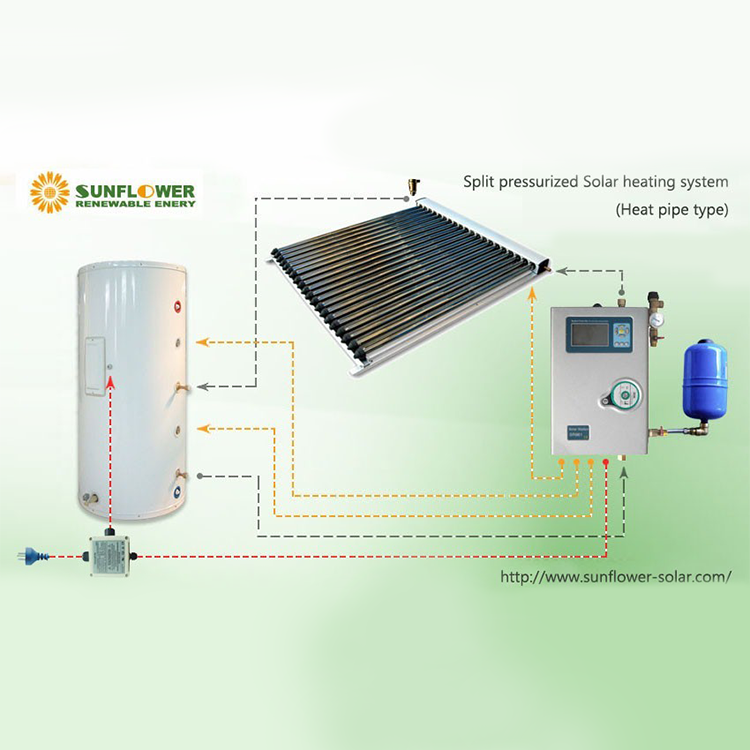Views: 26 Author: Site Editor Publish Time: 2021-09-06 Origin: Site

Solar hot water is a clean, reliable and cost-effective technology that can reduce utility bills for thousands of homes and businesses.
Solar water heating is included in the term 'solar heating and cooling technology' along with solar pool heating, solar space heating, solar cooling and solar pre-heating for industrial processes. Simply put, solar water heating systems collect the sun's thermal energy and use it to heat water for use in homes or businesses, rather than using electricity or natural gas.
A solar water heating system can be installed in every home and consists of three main elements: solar collectors, insulated pipes and a hot water storage tank.
Electronic controls can also be included, as well as an anti-freeze system for cold climates. The solar collector collects heat from the solar radiation and transfers the heat to the drinking water. This hot water flows from the collector to the hot water tank and is used when required; this type of system is known as an open-loop or direct system. If necessary, the auxiliary heating unit can remain connected to the hot water tank as a back-up.
Indirect systems are used in cold climates where freezing is possible. Antifreeze such as non-toxic propylene glycol is heated in the solar collector and circulated through a heat exchanger to the hot water storage tank. The portable water in the storage tank is heated by the hot, antifreeze filled heat exchanger and the heated water can then be used as required, while the cooled glycol is returned to the solar collector via a pipe to be heated again.
Another common design of solar water heating system for cold climates is called 'return'. This type of solar system usually uses water as the heat transfer fluid and is designed so that all the water in the solar collector "drains" back into a storage tank in the heating section of the building. When there is no sunlight available for heating, the solar pump is switched off and the water flows by gravity into the return tank.
Regardless of the type of solar system used, a properly designed and installed solar water heating system can be expected to meet a large proportion (40 to 80 per cent) of a building's hot water demand.